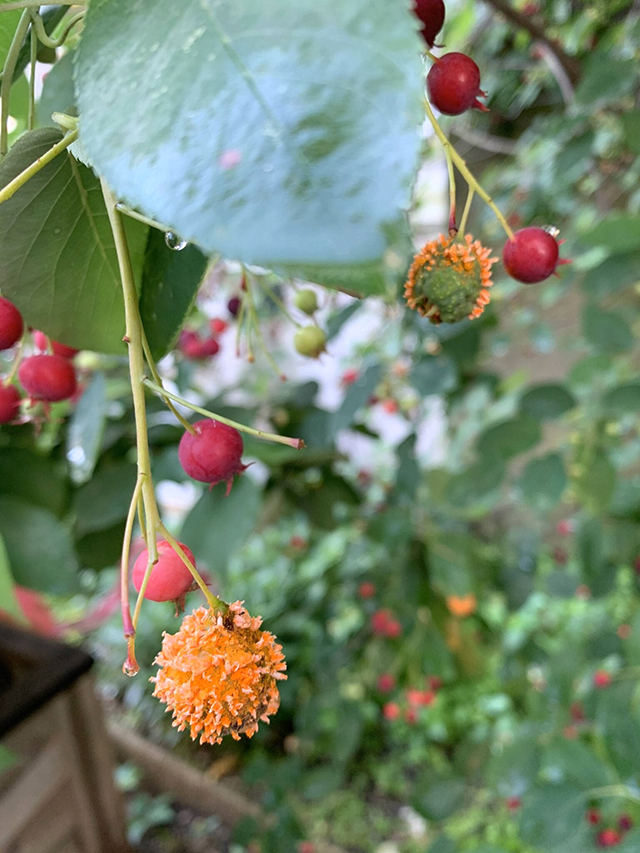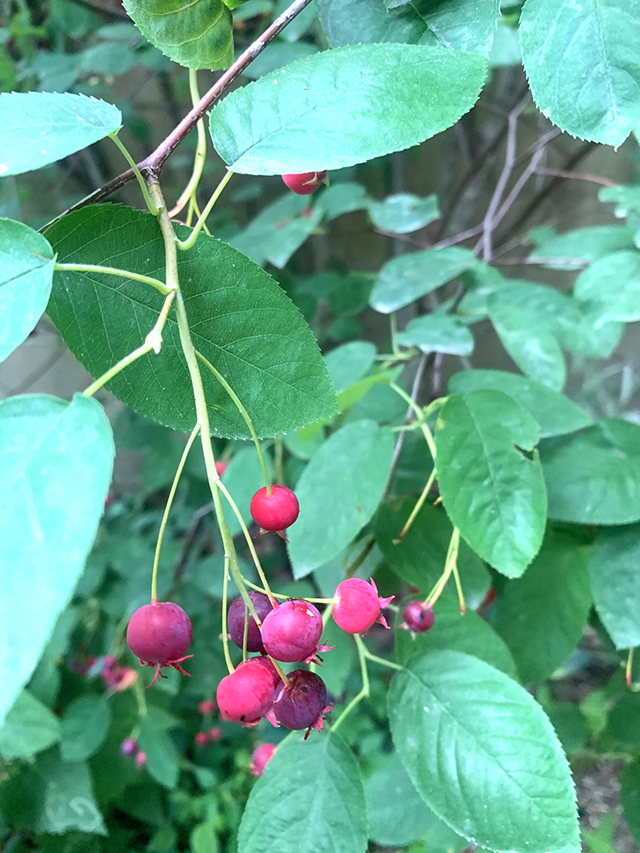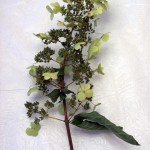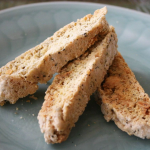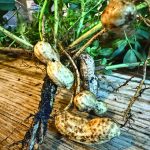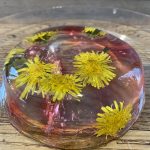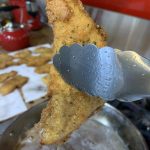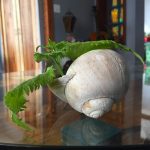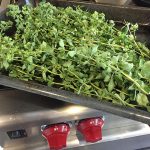Weird and wonderful
I’ve written before about perhaps my favorite tree – the Serviceberry (Amelanchier arborea). It gives so much. It blooms beautiful, petite white flowers in early spring. It services birds, squirrels (raccoons?), and me with delicious berries in mid-June.
They taste like if strawberries and blueberries had children. The less ripe ones also give you a burst of tartness occasionally, which I like! The color ranges from bright reds to dark burgundy. In late September the foliage turns attractive shades of yellow and rich copper. The tree is salt tolerant which makes it suitable for the peninsula and Broad Channel.
Last year I noticed orange spiky “pods” on the tree where the berries form. But not everywhere, just at random. I thought they were reproductive parts, as it shedded what looked like orange pollen. Being busy, I never got around to investigating it further.
The other morning while I was having coffee and my berry breakfast, I noticed the orange pods again. I decided to google “reproduction, serviceberry tree.” To my surprise, nothing of significance came up. I put in other descriptive search terms and looked at images. Nature always surprises us. There it was. But what I learned was shocking…
Fungus!
The galls of cedar apple rust, pretty right!
Panic ensued! But as I read further, cedar apple rust fungus is harmless to Serviceberry trees. It only makes infected berries inedible. And the “pods” are called galls.
Some gardeners feel the rust is an aesthetic issue but I think the exact opposite! The fungus is weird and wonderful. It has an organic shape and the bright orange looks pretty against the green leaves and red berries.
I was debating on whether or not I should remove the infected areas. After more research, I decided they should be removed. There’s an apple tree that borders my yard. And this fungus is harmful to apple trees.
My neighbor told me his mother’s apple tree has been living for at least 80 years and has 7 different grafts on it. The tree, since we moved to Rockaway – 7 years now! – has never done well. There’s always been rot and the fruit looks deformed. I believe the fruit tree is also infected with cedar apple rust fungus.
Junipers, which are everywhere in Rockaway, are cedar apple rust hosts in the winter. Then in the spring, during the rainy season, the spores move to other trees. Interestingly, the fungus can not infect the same species of tree in the same year. So it will jump from a Juniper to an apple tree back to a Juniper, as one example.
To control cedar apple rust there are many organic sprays you can buy. Ultimately what combats the fungus is sulfur. Remove infected berries in the spring and rake up and dispose of leaves in the fall putting them in the garbage, not your compost pile.
There are so many things I enjoy about gardening. One of them is this, learning through experience. Just when you thought you knew it all…
Follow me on instagram for the day-to-day in the garden @theglorifiedtomato
